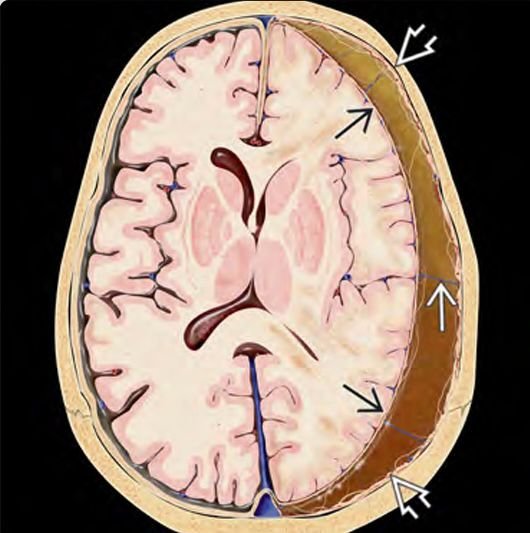Intravetricular Hemorrhage
Intravetricular Hemorrhage
Intraventricular Hemorrhage (IVH) refers to bleeding into the brain's ventricular system where cerebrospinal fluid (CSF) is produced and circulates. IVH is a serious neurological condition that predominantly affects premature infants but can also occur in older pediatric patients due to trauma, vascular malformations, or coagulopathies. In Bangladesh, where neonatal care is rapidly evolving, early diagnosis and specialized treatment of IVH are vital to reduce the risk of long-term neurological impairment and improve survival rates. Timely intervention by expert pediatric neurosurgeons is critical to managing this complex condition. What is Pediatric Intraventricular Hemorrhage? IVH involves bleeding within the ventricular spaces of the brain—mainly the lateral ventricles—and can extend into the surrounding brain tissue. This bleeding can lead to obstruction of CSF flow, causing hydrocephalus, increased intracranial pressure, and brain injury. The severity of IVH is classified into grades I to IV based on the extent of bleeding and ventricular involvement. Higher-grade hemorrhages are associated with more serious complications and worse outcomes. Causes of Pediatric Intraventricular Hemorrhage in Bangladesh Prematurity and Low Birth Weight: The most common cause in neonates due to fragile blood vessels in the germinal matrix Traumatic Brain Injury: Accidental falls, road traffic accidents, and non-accidental trauma Coagulation Disorders: Including hemophilia and platelet dysfunctions Vascular Malformations: Such as arteriovenous malformations or aneurysms Infections: Meningitis or encephalitis causing vascular inflammation Perinatal Asphyxia: Leading to vascular compromise and bleeding Symptoms and Clinical Presentation Symptoms vary depending on age and severity but may include: In newborns: Sudden apnea, bradycardia, lethargy, poor feeding, bulging fontanelle, and seizures In older children: Headache, vomiting, altered consciousness, seizures, weakness, and signs of increased intracranial pressure Developmental delays and motor impairments may emerge in survivors of severe IVH Diagnosis Prompt and accurate diagnosis involves: Cranial Ultrasound: Primary screening tool in premature infants to detect ventricular bleeding CT Scan of the Brain: Effective for detailed visualization of hemorrhage in older children MRI Brain: Useful for assessing associated brain injuries and ventricular enlargement Neurological Examination: Age-appropriate assessment of consciousness, motor function, and reflexes Laboratory Tests: To identify underlying coagulopathies or infections Treatment Approach by Dr. Md. Nafaur Rahman Medical Management Intensive monitoring in neonatal or pediatric intensive care units Supportive care including respiratory support, seizure control, and blood pressure stabilization Correction of coagulation abnormalities Prevention of secondary brain injury by controlling intracranial pressure Surgical Intervention Ventriculoperitoneal (VP) Shunting: For post-hemorrhagic hydrocephalus to divert excess CSF and relieve pressure External Ventricular Drain (EVD): Temporary drainage of CSF in acute settings Endoscopic Third Ventriculostomy (ETV): Selected cases where appropriate Careful surgical planning tailored to pediatric anatomy and disease severity Prognosis and Long-Term Follow-Up Outcomes depend on IVH severity, timely treatment, and presence of complications. Potential long-term challenges include: Hydrocephalus requiring lifelong management Motor disabilities such as cerebral palsy Cognitive and developmental delays Seizure disorders Vision and hearing impairments Comprehensive neurodevelopmental follow-up and rehabilitation services are essential to optimize quality of life. Pediatric Neurosurgical Care Excellence in Bangladesh Dr. Md. Nafaur Rahman provides expert pediatric neurosurgical care for intraventricular hemorrhage at the National Institute of Neurosciences & Hospital (NINS) and Bangladesh Paediatric Neurocare Centre, combining: State-of-the-art imaging and surgical facilities Multidisciplinary team approach including neonatology, neurology, and rehabilitation Family-centered counseling and support Focus on early diagnosis, intervention, and long-term follow-up Contact Information for Expert Pediatric Neurosurgery 📌 Dr. Md. Nafaur Rahman Assistant Professor, Pediatric Neurosurgery, National Institute of Neurosciences & Hospital (NINS) Chief Consultant, Bangladesh Paediatric Neurocare Centre 📞 Appointments & Emergency Contact: 📱 +8801912988182 | +8801607033535 🌐 Visit: www.neurosurgeonnafaur.com
YouTube Videos and Patient Reviews on Intravetricular Hemorrhage










